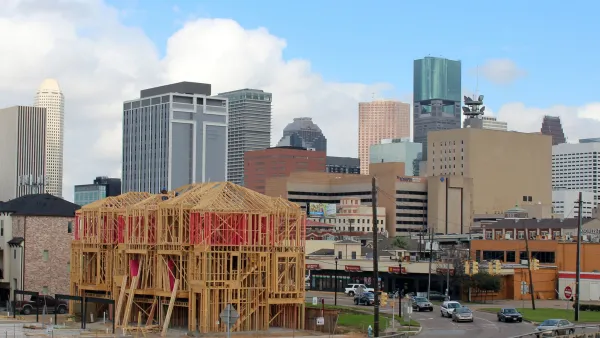In its history, Los Angeles has made four fateful planning decisions, in the opinion of real estate consultant and developer Michael P. Russell, but much can be learned from these mistakes.
Los Angeles has, as other cities have, made many planning mistakes over its history. However, four of these mistakes distinguish it from the pack, according to Los Angeles real estate developer and advisor, Michael P. Russell:
1) Siting the City Inland: "It started with the founding of the city. Every other world-class city is located on a body of water—an ocean or a river. If an ocean or sea is near by, a city usually is located on the water. This did not happen in the case of Los Angeles."
2) Rejecting the Olmsted Recommendations. "In 1930, the firm started by the sons of the great landscape architect Frederick Law Olmsted, designer of Central Park in New York in addition to other projects, proposed a comprehensive and coherent network of parks, playgrounds, schools, beaches, forests, and transportation to promote the social, economic, and environmental vitality of Los Angeles and the health of its people. . . . Instead, civic leaders killed the Report because of politics, the bureaucracy and private landowner greed."
3) Channelization of the Los Angeles River: The "48 mile “river” was turned into a concrete channel from Simi Valley to Long Beach."
4) Leaving the Park out of South Park: "In 1970, the Central City Association of Los Angeles retained Wallace McHarg Roberts and Todd to prepare a General Development Plan for downtown Los Angeles that . . . called for a 25-acre park—South Park—two blocks east of what is now Staples Center. . . . However, true to form, the City and the LA Redevelopment Agency did not implement the Wallace McHarg Roberts and Todd plan. Thus, there was 'no park in the South Park' area."
Mr. Russell concludes "[w]hat are the lessons learned from these swing and misses? (1) Planning and land use issues are important and our decisions or lack thereof live on for a long time. (2) As communities, we must have a clear vision and act boldly. (3) We need to put a leader in charge of implementing the bold vision. (4) The leader must be given the authority to implement the vision. (5) We need to give the person in charge the financial and other necessary resources to implement the vision in a timely manner. (6) If we create an environment where the vision is being implemented in a timely manner, the private and non-profit sectors will join the parade."
FULL STORY: Swung on and Missed

National Parks Layoffs Will Cause Communities to Lose Billions
Thousands of essential park workers were laid off this week, just before the busy spring break season.

Retro-silient?: America’s First “Eco-burb,” The Woodlands Turns 50
A master-planned community north of Houston offers lessons on green infrastructure and resilient design, but falls short of its founder’s lofty affordability and walkability goals.

Delivering for America Plan Will Downgrade Mail Service in at Least 49.5 Percent of Zip Codes
Republican and Democrat lawmakers criticize the plan for its disproportionate negative impact on rural communities.

Test News Post 1
This is a summary

Test News Headline 46
Test for the image on the front page.

Balancing Bombs and Butterflies: How the National Guard Protects a Rare Species
The National Guard at Fort Indiantown Gap uses GIS technology and land management strategies to balance military training with conservation efforts, ensuring the survival of the rare eastern regal fritillary butterfly.
Urban Design for Planners 1: Software Tools
This six-course series explores essential urban design concepts using open source software and equips planners with the tools they need to participate fully in the urban design process.
Planning for Universal Design
Learn the tools for implementing Universal Design in planning regulations.
EMC Planning Group, Inc.
Planetizen
Planetizen
Mpact (formerly Rail~Volution)
Great Falls Development Authority, Inc.
HUDs Office of Policy Development and Research
NYU Wagner Graduate School of Public Service




























